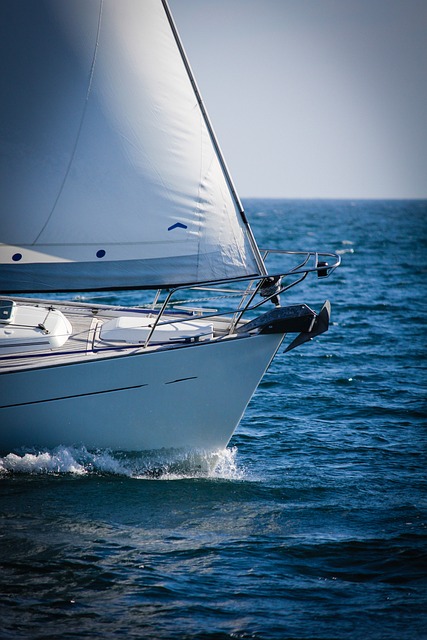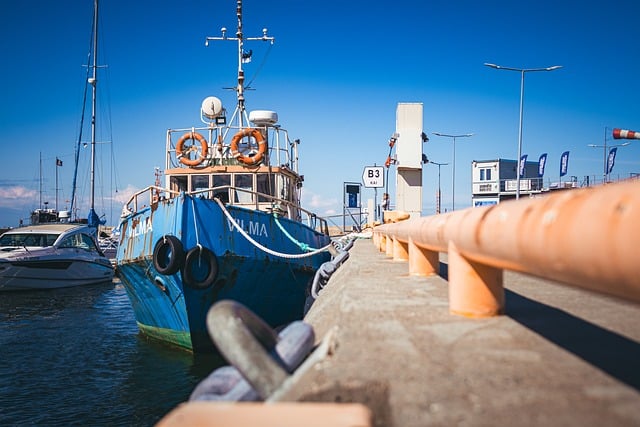Marine batteries are essential components for ensuring the seamless operation of various onboard systems in nautical environments. These specialized batteries are designed to withstand saltwater, temperature fluctuations, and vibrations, offering long-lasting performance through materials that prevent leakage and corrosion. Marine batteries come in different types, including lead-acid, AGM, gel cell, and lithium-ion, each adapted for specific tasks such as engine starting or prolonged power supply for trolling equipment. Lead-acid marine batteries are known for their dependability and cost-effectiveness, while AGM batteries offer a non-hazardous, spill-proof design with excellent vibration absorption. Gel cell batteries provide enhanced shock resistance and long life, and lithium-ion batteries stand out with their high energy density, lighter weight, and quicker recharge capabilities. Selecting the right marine battery type is crucial for optimal performance and reliability on the water, considering factors like ampere-hour rating, cold cranking amperes, and reserve capacity. AGM and gel cell batteries are particularly favored for their safety and consistent performance across a range of temperatures, making them suitable for long voyages. Gel cell marine batteries, in particular, are commended for their extended lifespan and stability in turbulent conditions, with a design that reduces spillage risks. Boat owners should carefully consider their specific power needs to choose the most appropriate battery for their vessel's maritime adventures.
Exploring the vast array of marine batteries can be as intriguing as the depths of the oceans they power. This article delves into the necessity of these power sources for maritime activities and unravels the science behind different marine battery types, including lead-acid, AGM, gel cell, and lithium options. We’ll navigate through the factors that influence their selection, such as depth of discharge, ampere hours, cold cranking amps, and size constraints. Additionally, we’ll consider how environmental conditions dictate battery choice and outline essential maintenance practices to ensure your marine battery operates at peak performance. Whether you’re a seasoned sailor or a new boater, understanding the nuances of these batteries will enhance your nautical adventures.
- Understanding the Role of Marine Batteries in Nautical Operations
- The Various Chemistries Behind Marine Battery Types
- – Lead-Acid Marine Batteries: Reliability and Affordability
- – AGM (Absorbent Glass Mat) Marine Batteries: Spill-Proof Performance
- – Gel Cell Marine Batteries: Long-Lasting Power for Seafaring Vessels
Understanding the Role of Marine Batteries in Nautical Operations

Marine batteries play a pivotal role in nautical operations, providing the essential power required for a multitude of onboard systems. These robust batteries are tailored to withstand the demanding conditions often encountered at sea, including saltwater exposure, temperature fluctuations, and frequent vibrations caused by vessel movement. Their ability to reliably operate in such environments is crucial for the safety and functionality of boats. Marine batteries are designed with specialized materials to prevent leakage and corrosion, ensuring longevity and optimal performance.
The diverse needs of various marine vessels necessitate different types of marine batteries, each offering unique characteristics suited to specific applications. For instance, starting batteries are engineered for high current delivery to efficiently crank engines during start-up. Conversely, deep-cycle batteries are designed for sustained power output, ideal for trolling equipment or other systems that draw power over extended periods. Additionally, the dual purpose marine battery combines features of both starting and deep-cycle batteries, offering versatility for a range of nautical activities. Understanding the role of these different types allows boat owners to select the most appropriate marine battery for their vessel’s specific requirements, ensuring seamless operation and reliability on the water.
The Various Chemistries Behind Marine Battery Types

Marine batteries are designed to withstand the corrosive and challenging conditions often encountered on boats, such as vibrations, temperature fluctuations, and humidity. The robust construction and specialized chemistries of these batteries ensure reliability in marine applications. There are several types of marine batteries, each characterized by its unique chemical composition and performance characteristics. Lead-acid batteries, for instance, have been the traditional choice, offering a reliable energy source for starting engines and powering electrical systems. However, advancements in battery technology have introduced alternatives like AGM (Absorbent Glass Mat), Gel, and Lithium-ion marine batteries, each with its own advantages.
AGM marine batteries are widely used due to their spill-proof nature and ability to deeply discharge without damaging the battery. They feature a fiberglass mat that holds the electrolyte against the plates, which provides exceptional vibration damping, longer cycle life, and high performance across a wide range of operating temperatures. Meanwhile, Gel cell batteries offer similar benefits with a gelled electrolyte, making them even more resistant to shocks and vibrations than AGM batteries. Lithium-ion marine batteries are the latest innovation, offering lighter weight, greater energy density, and a longer service life compared to traditional lead-acid batteries. These lithium options also provide faster recharging times and improved efficiency for both starting and deep-cycle applications. Each of these chemistries is specifically engineered to cater to different aspects of marine use, ensuring that there is a suitable battery type for every boating need and condition.
– Lead-Acid Marine Batteries: Reliability and Affordability

Lead-acid marine batteries have long been a staple in the world of maritime power solutions due to their reliability and affordability. These batteries are constructed using lead plates submerged in a sulfuric acid electrolyte solution, which allows them to deliver a steady supply of current necessary for starting engines, running electronics, and powering lights on vessels. The robustness of these batteries is well-suited for the demanding conditions found at sea, where exposure to saltwater, temperature fluctuations, and vibrations are common. Their durability and proven performance make them an accessible option for a wide range of recreational and commercial marine applications. Additionally, their low self-discharge rate means they can maintain their charge over extended periods, making them ideal for seasonal or intermittent use. When selecting a lead-acid marine battery, factors such as ampere-hour (Ah) rating, cold cranking amperes (CCA), and reserve capacity (RC) should be considered to ensure the battery meets the specific requirements of the application. Overall, lead-acid marine batteries remain a popular choice for their combination of reliability, ease of maintenance, and cost-effectiveness, making them a go-to solution for mariners worldwide.
– AGM (Absorbent Glass Mat) Marine Batteries: Spill-Proof Performance

AGM marine batteries represent a significant innovation in the realm of maritime power solutions, offering a spill-proof performance that makes them an ideal choice for seafaring vessels and other marine applications. The design of AGM batteries features a felt material saturated with a paste consisting of sulfuric acid and lead dioxide plates. This construction eliminates the liquid electrolyte found in traditional flooded lead-acid batteries, thereby preventing leaks and spills that can be a concern when on the water. The absence of liquid also means these batteries can be mounted in virtually any orientation without affecting their functionality. This robustness is particularly advantageous in marine environments where space is often limited and conditions can be harsh. AGM marine batteries are renowned for their durability and long service life, making them a preferred choice among boat owners who prioritize reliability and safety at sea.
Furthermore, AGM marine batteries are designed to deliver consistent performance across a wide range of temperatures, which is crucial for the diverse climates encountered on the water. They can handle deep discharge cycles without compromising their capacity or lifespan, an essential feature for applications where energy reserves need to be preserved for long periods. Additionally, these batteries boast rapid recharge capabilities, which are indispensable when quick recovery of power is necessary after extended use. This combination of reliability, safety, and high performance makes AGM marine batteries a sound investment for anyone looking to equip their vessel with a dependable power source. Whether for trolling or long-distance cruising, these batteries stand up to the rigorous demands of maritime use.
– Gel Cell Marine Batteries: Long-Lasting Power for Seafaring Vessels

Marine batteries are pivotal components for seafaring vessels, providing the essential power required to navigate and operate effectively on the open waters. Among the various types of marine batteries, gel cell marine batteries stand out due to their remarkable longevity and performance. These batteries feature an absorbed glass mat (AGM) design with a gel electrolyte, which offers superior stability over traditional flooded lead-acid batteries. The gel within these cells ensures minimal sloshing during motion, providing consistent power output and enhanced reliability, even in the roughest seas. This characteristic is particularly advantageous for long voyages where maintaining a steady electrical supply is critical. Additionally, gel cell marine batteries are less prone to spillage, making them safer for use on board where space can be limited and conditions often unpredictable. Their robust construction and long service life make them an excellent choice for those seeking dependable energy storage solutions in marine applications. Furthermore, these batteries can handle a wide range of temperatures, ensuring optimal performance regardless of the climate. This makes them suitable for a variety of marine environments, from the warmest tropical waters to the coldest polar regions. When selecting a gel cell marine battery, it’s important to consider factors such as the vessel’s power requirements, expected operating conditions, and the intended duration of cruises to ensure the best match for your specific needs.
Marine batteries play a pivotal role in powering various systems on board vessels, each type catering to specific needs and conditions. From the dependable lead-acid options to the advanced AGM and gel cell batteries that offer spill-proof reliability and long-lasting power respectively, understanding the nuances of each type ensures optimal performance for seafaring endeavors. The choice between these marine battery types should be informed by the vessel’s power requirements, operating environment, and budget considerations. By selecting the most suitable marine battery, mariners can navigate with confidence, knowing their electrical systems are backed by robust and reliable power sources.
